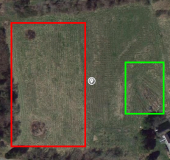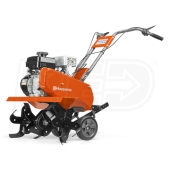




The Enemy of progress is the hope of a perfect plan




Idle dreamer








Idle dreamer




The Enemy of progress is the hope of a perfect plan




Idle dreamer








Invasive plants are Earth's way of insisting we notice her medicines. Stephen Herrod Buhner
Everyone learns what works by learning what doesn't work. Stephen Herrod Buhner




Simone Gar wrote:How about birds, mice and deer eating the seeds? I have a similar project but I am concerned they eat all seeds
The Enemy of progress is the hope of a perfect plan




Idle dreamer

 1
1




Ray Cecil wrote:Is there any natural method to kill the grasses/weeds that may still grow when spring comes around?




Joseph Lofthouse wrote:
Ray Cecil wrote:Is there any natural method to kill the grasses/weeds that may still grow when spring comes around?
One person's grasses/weeds are another person's wildflowers.
The Enemy of progress is the hope of a perfect plan








Shane Kaser wrote:Don't go into this with the expectation that you can eliminate and outcompete grasses. Grasses are naturally a part of the "seed-bank", both in the soil and with what blows in on the wind. Grasses are specially evolved for high-disturbance high-exposure sites, such as an open wild-flower field. I highly recommend you select native/well-adapted grass-species to include in your wildflower mix. I am not familiar with the grasses of Kentucky, so you will have to do your own research there.
Also (you're probably already good on this, but it's important): make sure you include at least one bomb-proof nitrogen-fixer in your mix. Around here, that is White Clover. Perennial, deep-rooted, drought-tolerant, beneficial-insectory, nitrogen-fixer.
Yes you will need to mow it once or twice per year, or you'll probably start getting tree/shrub saplings overtaking. Get some sheep/goats?
It'll look real nice. Tall meadow is very beautiful. Try mowing corridors and rooms into it. That's fun.
-B
The Enemy of progress is the hope of a perfect plan




Western Montana gardener and botanist in zone 6a according to 2012 zone update.
Gardening on lakebed sediments with 7 inch silty clay loam topsoil, 7 inch clay accumulation layer underneath, have added sand in places.




William Schlegel wrote:Plant in the fall. Include some native grasses in your mix. Buy seed from prairie nursery or prairie moon nursery instead of American meadows. Or buy species separately and make your own mix. I looked at American meadows Midwest mix just now, I didn't like half the species in it for one reason or another but a lot of the species could be summed up by a word or two "non-native, native but not to the Midwest, will die out, weedy, cheap seed, etc". Some species in the mix are good but why pay for the other stuff?! Find out what kind of grass you have in your field. Kentucky Bluegrass would be good but if you have smooth brome or tall fescue you may have to do a longer more intensive period of site preparation. Also good to pay attention to what species of weeds pop up.
The Enemy of progress is the hope of a perfect plan




Idle dreamer




Tyler Ludens wrote:I agree, many of the species in that mix are not Midwest natives: Cornflower, Siberian Wallflower, Shasta Daisy, Cosmos, Sweet William, California Poppy, Baby's Breath, Scarlet Flax, Red Poppy are those which leaped out at me.
The Enemy of progress is the hope of a perfect plan








Idle dreamer




Casie Becker wrote:I don't care if a species is native as long it can thrive without pampering, or becoming a monoculture. If there is a native variety that will do the same job as well as a non-native I will still give it preference in my planting schemes. I am assured that a native plant is prepared to deal with the variables and extremes of my region. With a mix that is highly dependent on non-native plants you run a greater risk of seeds failing to germinate or thrive in your conditions. We've had some beautiful non-natives naturalize in my region though. The mix happily with the native wildflowers every spring. Red poppies are one of them.
I will give you my own word of warning. Part of the reason such mixes have so many annual flowers is that many of the perennial flowers won't bloom until the next year. After the perennials have time to establish they will begin to cover all the available land and leave little room for the annuals to come back. Don't think the plants have failed if you fail to see certain blooms the first year. They might be focusing on establishing a strong plant for the future. And expect the composition of your flower meadow to change considerably over the years. If your perennials are happy and well adapted you won't suffer any reduction in blooms, but you may lose some of the annuals completely.
Tyler Ludens wrote:My only beef with non-natives is that they typically don't support native insect populations. Without sufficient insects other wildlife such as birds, reptiles, and amphibians, may decline. Habitat loss in the present time is extreme, so although I'm not with any kind of "all natives or else!" program, I think it is best to include as many natives as possible in any planting.
The Enemy of progress is the hope of a perfect plan




The Enemy of progress is the hope of a perfect plan
 1
1




Western Montana gardener and botanist in zone 6a according to 2012 zone update.
Gardening on lakebed sediments with 7 inch silty clay loam topsoil, 7 inch clay accumulation layer underneath, have added sand in places.




William Schlegel wrote:I do work as a botanist and I often hand collect native wildflower and grass seed for a living.
The thing I find most troubling about the American meadows seed mix is the longevity. You are doing a lot of work. You need species that will give you a good return on that investment of time, energy, money, and fossil fuel. I don't think that mix will do a good job of it.
I reccomended prairie moon nursery because their seed mixes should last longer as plantings and support more pollinators. However, only if planted in the fall or winter. I've seen articles and pictures of plantings in fall versus spring. Spring planted gets far fewer species from the same seed mix to grow.
Given that you've already got the seed you could go ahead and plant it. It isn't terrible I'm just worried it may dissapoint after a few years.
The Enemy of progress is the hope of a perfect plan




Western Montana gardener and botanist in zone 6a according to 2012 zone update.
Gardening on lakebed sediments with 7 inch silty clay loam topsoil, 7 inch clay accumulation layer underneath, have added sand in places.








Tracy Wandling wrote:To address your question of how to get rid of the weeds before planting your wildflower mix - what about flame weeding? It's a pretty big space, but it is a better option than poison. And much less work than going over the whole area with a rake or hoe. Just a thought . . .
The Enemy of progress is the hope of a perfect plan





|
expectation is the root of all heartache - shakespeare. tiny ad:
Support permies and give beautiful gifts to gardeners: permaculture playing cards.
https://gardener-gift.com/
|







